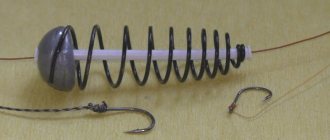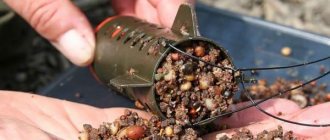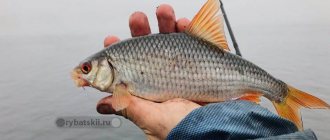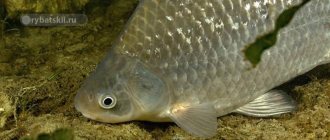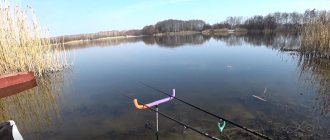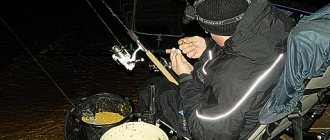Roach can be caught at any time of the year, but there are also situations when the roach does not want to bite. This can be either a difference in atmospheric pressure or a lack of oxygen in the water. In this case, anglers use different types of bait. Here you will learn how to make the right, best bait with your own hands, both for fishing in winter and for summer, autumn, spring. All recipes are extremely easy to prepare at home.
Summer bait for roach
There are many types of homemade baits for roaches, which have their own little tricks, but their basic composition is practically the same. In summer, two types of bait are most often used. Here are two of the best.
Recipe No. 1 combined
Breadcrumbs will be the main component in almost all baits.
This type includes crushed bait with the addition of anise drops, which add flavor and lure fish with their composition. Making such bait is very simple. To do this you need:
- Pearl barley or rolled oats - 500 g , which it is advisable to grind using a blender, coffee grinder or meat grinder.
- Breadcrumbs in the amount of 100 grams .
- Halva 100-150 gr.
- Flavored anise drops .
Breadcrumbs and cereals must be poured into a prepared container and mixed thoroughly. Next, you should add halva, which also needs to be crushed, and pour boiling water over the entire composition. After this, let the mixture brew and add a few drops of anise flavor. It is important to know that the drops must be added little by little, and it is advisable to determine the smell of the resulting bait yourself, otherwise, if there are excess drops of flavoring, the roach will avoid the feeding area due to the very pungent smell.
Recipe No. 2 Cereal-cake
This type of bait consists of large ingredients, namely:
- Whole grain pearl barley in the amount of 200 - 300 g .
- Hercules and barley – 100 gr .
- Breadcrumbs – 100 grams .
- Cake – 50 g .
- Crushed sunflower seeds (regular sunflower seeds) – 50 g .
To prepare the bait, you need to pour whole grain pearl barley, rolled oats, and barley into a pan. Pour water over the cereal and cook over low heat until cooked. Determining the readiness of the cereal is easy. If the cereal has swollen and become soft, it means it is ready. After these preparations, it is necessary to add breadcrumbs and crushed sunflower seeds or cake to the resulting mass. Mix everything thoroughly and the bait will be ready for use.
In the summer, high-density bait is more often used, since the mixture sometimes has to be thrown into roach feeding areas far from the shore. Therefore, it is worth taking care of the density of the bait. It shouldn't be liquid. If the mass turns out to be very liquid, then you should add breadcrumbs, thereby adding viscosity to the bait.
Tackle for catching rams
Taran is a type of roach, and a large one at that. You can catch it in the basins of the Azov and Black Seas. Several decades ago there was quite a lot of it, and it was one of the commercial species that fed the south of Ukraine and Russia. Recently, its population has sharply declined, and it is found only by amateur fishermen.
Moreover, you can catch it only during a certain period. It spends most of its life at sea, but stays close to the shore and in places where rivers flow. The fact is that the ram does not tolerate salt water, and therefore stays on the border with fresh water, where the salt in the water contains no more than 7 ppm.
In this regard, it should be looked for in river mouths, canals, bays and estuaries.
Spring
As soon as the water warms up to +7-10°C, the ram begins to spawn. Moreover, it does not spawn in the sea, but rises into rivers, bays and canals. The water in such places warms up much faster, and there is enough vegetation to feed and protect the fry.
During the period when the ram spawns, any fishing, even amateur fishing, is prohibited. Therefore, you can start catching ram only at the beginning of summer, when after spawning it returns to its former habitats.
It stops in coastal thickets of reeds or water lilies, where amateur fishermen catch it.
Summer
Hungry after spawning, the ram behaves very actively and bites on any bait, both animal and plant origin. And yet, the favorite baits are maggots and bloodworms, or combinations thereof.
Ram can be caught with any tackle, including a classic float rod. Recently, many anglers prefer a feeder.
By mid-summer, some of the fish go to sea, and some remain in the estuaries. What remains is called river ram. However, it does not go far from the border of fresh and salt water.
Sea rams are caught both from the shore and from a boat, using various tackles, including bottom ones. But sea ram is quite rare, so fishermen do not give preference to catching it. In the summer, like most fish, the ram switches to plant baits, but is unlikely to refuse maggots. During this period, she begins to be cautious and cannot take every bait.
Autumn
In the autumn, the ram again goes into rivers, estuaries and bays, where, gathered in flocks, it moves around the water area in search of food. Like all fish, ram during this period gains nutrients before wintering.
Winter
In winter, rams are also caught as in summer. To do this, you can use winter versions of fishing rods, including float ones.
Rod
A blank with a fast or medium action is suitable as a feeder rod, since the ram is a small fish and only the tip of the rod needs to bend. When fishing on a river or canal, a rod about 4 meters long is sufficient. If you want to fish at sea and from the shore, then it is advisable that the rod be about 6 meters long.
The rod test must correspond to the nature of the gear. For fishing rams, do not choose rods with a test weight of more than 50 g, since you have to catch small fish and in conditions where there is practically no current.
Coil
The same applies to the choice of a spinning reel. It makes no sense to use powerful and very expensive coils. The only thing is that she should not be afraid of salt water. Its size can be in the range of 2000-3000. To catch rams, as a rule, light class rods are used, so it is possible to use other types of reels.
fishing line
The choice of fishing line also does not require special conditions and you can get by with a fishing line thickness of 0.1-0.12 mm if the bottom is clean. And if there are thickets of aquatic vegetation, then you can take a fishing line with a larger diameter, somewhere around 0.17-0.2 mm. In this case, the thickness of the leash can be within 0.08 mm for the first case, and 0.15 mm for the other. Its length can range from 50-80 cm.
Hooks
Since the fish is not large, the size of the hook is also not large and No. 12-No. 18, according to the international scale, will turn out to be normal, especially since the bait is also suitable.
Feeder equipment can be different, but it is better to give preference to more sensitive ones, such as a paternoster or an asymmetrical loop. The paternoster is very easy to tie, even near a pond, and the asymmetrical loop is more sensitive.
Paternoster
To tie a paternoster, you need to form two loops on the main fishing line: one at the end of the fishing line, the other at a distance of 15-20 cm from the first.
The first, smaller one, is intended for attaching the leash, and the second, larger one (about 15 cm in diameter) is for attaching the feeder.
The leash is attached to the main line using a loop-to-loop method, and the feeder can be attached using a clasp and swivel. This will make it possible to quickly change the feeder, depending on the fishing conditions.
Asymmetrical loop
To tie an asymmetrical loop, you need to take a piece of fishing line about 2 meters long and fold it in half. Measuring 40-50 cm from the end, a loop is formed for attaching the leash.
After this, take the free ends and fold them together, but so that one end is 20 cm longer than the other, after which a double knot is knitted. The asymmetrical loop is ready.
To make it easier to attach the feeder, a swivel with a carbine is put on the longer end before tying the knot. All unnecessary ends of the fishing line are cut off.
The feeder is selected depending on whether there is a current or not. If there is no current in the reservoir, then feeders weighing no more than 20 g are taken, and if there is a current, then feeders weighing from 80 to 120 g are selected, depending on the strength of the current. The stronger the current, the more weight the feeder should have, otherwise the tackle will be carried away by the current. It is possible to use various types and types of feeders.
Float
Floats should be used with a keel if fishing is carried out at sea or in bad weather. The float must have good visual characteristics as well as stability characteristics.
In fast current conditions, it is better to use floats that look like a ball or a drop. If there is no current, then floats with a long and thin bite indicator are suitable. Wagler type floats, which have one attachment point, have proven themselves well.
It is very important to load the float correctly so that it is sensitive enough.
Lastly
And yet, when going fishing to catch rams, you need to remember that:
- From February 1 to May 31, ram fishing is prohibited by law, and in case of violation, penalties may be applied.
- When going fishing, you should think about the right equipment. It is better if the clothes have protective camouflage and the gear is not too bright, otherwise the ram may not approach the fishing spot.
- The bait must blend in with the color of the bottom, otherwise it may alert the fish.
- The ram will not take the bait if part of the hook is visible, namely its sting.
- The ram population has dropped sharply, so you need to take only specimens that are at least 15 cm long, and it is better to release the rest. This will allow us to increase its number in the near future.
Every fisherman prepares for fishing in advance and this is very important, since he does not have to waste the useful time allotted for fishing for completing and installing gear near the reservoir.
If something happens, for example a snag, resulting in the tackle breaking, then the presence of elements such as a swivel and carabiners allows you to quickly restore its functionality. The main thing is that the previous gear is assembled according to all the rules.
Leashes often break, so it is better to take several leashes of different lengths with you. Then, near a reservoir, you can experiment, especially since it won’t take much time to replace them.
As for the rod, it is better to give preference to a light, modern blank that will not make you feel tired with frequent casts. It is better to take imported hooks. They are more reliable and sharper. The fish “clings on itself” on them, so sometimes you don’t have to hook, and if you do it, it’s not very sharp. Loading…
Source: https://FishingDay.org/snasti-dlya-lovli-tarani/
Autumn bait for roach fishing
In the autumn, it becomes more difficult to lure roaches, as the fish become lethargic and inactive. In such cases, bait when fishing for roach in the fall is especially promising among anglers. You can buy bait for roach in specialized stores, but professional fishermen prefer to make it with their own hands, since it is cheaper and most often store-bought bait for roach has to be modified to improve its luring qualities. Autumn bait for roach is practically no different from summer bait, but in autumn the water in reservoirs fades and becomes transparent and the fish feel and are afraid of the bait. To do this, it is necessary to make dark types of bait.
Best fall recipe #1
One of the best roach bait recipes at the moment. To prepare such bait for roach you need:
- Pearl barley – 300-400 grams , which is the main ingredient of the bait.
- Flax seeds – 50 grams , which add viscosity to the bait and are dark in color.
- Brown bread crackers 100-150 g , which must first be crushed in a coffee grinder or using a blender.
- Cake – 50 g .
- Anise flavoring or hemp oil , which has a stupefying effect on roaches and attracts them to the fishing site.
- Cocoa powder – 1 teaspoon .
- Food for cats or dogs, 50 grams as an additive to bait.
By the way, kitiket is used not only for baiting roach, but also for other cyprinids, such as crucian carp
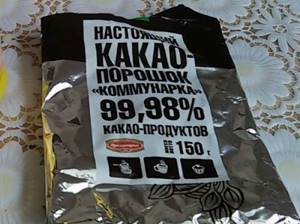
When using cocoa powder, remember, even the cheapest one will do.

Pearl barley must be poured with boiling water or cooked over low heat and allowed to brew. Next, you need to add flax seeds and black bread crackers to the pearl barley mass and mix everything thoroughly. After this, add cake, cocoa and cat or dog food to the roach bait and mix. The final touch is to add flavoring in the form of anise or hemp oil. However, if there is cocoa and flax in the groundbait, you don’t have to add drops, since the flax and cocoa will already add flavor to the groundbait.
It is important to know that the bait in the autumn should be the darkest, since in clear water it is difficult for roaches to recognize it and, thanks to the smell of the bait, the roach will live at the fishing site for a very long time.
Option for autumn No. 2
Dry milk creates a cloud of turbidity, which attracts roaches.
There is another type of bait for roaches in the fall, and this type quite often works during the period when roaches are not biting in the fall. To prepare this bait you need:
- Powdered milk – 1 tablespoon .
- Orange and lemon zest - 1 tablespoon each .
- Bloodworms or dried worms , which can be replaced as food for aquarium fish.
- Sand or clay , to give the bait viscosity and color.
Mix all these components and add viscosity to the bait using water. In this bait, due to the powdered milk and zest, the aroma spreads across the pond over a long distance. It is optimal if the water is taken directly from the reservoir.
Roach bite depending on the month of fishing
The roach bite in September is stable and long-lasting, just like in the summer. The still warm waters of the reservoirs provide the fish with generous food in the thicket of underwater vegetation rich in both plankton and fresh algae. The activity of the flocks begins at sunrise and can last until sunset, stopping only in the dark period of the day.
Important! The bite is favored by sunny days with low wind strength and stable pressure within 740 atmospheres.
October days are already much shorter in terms of the intensity of the light flux, and they are not particularly encouraging with the stability of the weather with changes in atmospheric pressure, which makes the bite periodic.
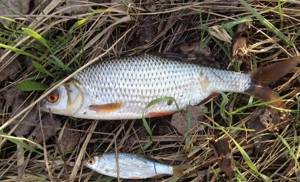
Important! On a cool October morning, the first bites can begin by 10 o’clock and this is on days with clear and windless weather. Typically, the greatest activity occurs in the afternoon, ending abruptly with the first signs of dusk.
Rainfall for several days completely stops the bite. Frosts with the formation of an edge of ice along the edges of the reservoir provide the prerequisites for increasing the intensity of the bite with the daytime heating of the water area on this fine day. It is most difficult to catch roach in November. The fish becomes unpredictable, and for unknown reasons may not show activity for several days, retreating to depth.
Important! With the relative stabilization of the weather, the duration of the daytime bite may be limited to a couple of meager hours in the afternoon. In November, cloudy but relatively warm days with no wind are considered favorable days for fishing.
Bait for catching roach in winter
In winter, roach is the main object of fishing, since this fish does not hibernate and leads an active lifestyle under the ice. Finding a roach in winter is not difficult, since it stays in a dense school and moves around the reservoir in search of food.

It is believed that if an angler attacks a school of roach, then the fishing will be good. However, the roach is very shy and any movement on the ice can scare it away from its resting place. In such cases, to prevent the roach from leaving, bait is used. Winter bait consists of crumbly ingredients that are poured into the hole and gradually settle to the bottom, forming a column of muddy mass that lures the roach and makes it stand at the fishing spot.
No. 1 Classic
In winter, you can mold the bait into balls, this allows you to more precisely deliver it to the right place, even with strong currents. It
is the easiest way to make such bait. You will need:
- Semolina – 150-200 grams .
- Breadcrumbs – 150 grams .
- Bloodworm.
- Maggot.
- Powdered milk – 2 teaspoons .
Semolina, crackers and powdered milk are added to a pre-prepared container. All this is thoroughly mixed. It is necessary to add bloodworms and maggots to the resulting mixture, while calculating the proportion, since the fish, if bloodworms are added in too large a portion, can quickly become saturated and leave the feeding area.
An important aspect when feeding fish in winter is the proportion of food added to the hole. You shouldn’t add a lot, but it’s better to wait until the bite subsides and then add a small pinch of bait to avoid saturating the roach.
No. 2 Classic winter
There is another type of feeding roach in winter, which differs from the previous method in that it is lowered to the bottom with the help of a feeder and there it attracts fish that stay near the bottom, especially during frosty periods. To prepare such bait, it is necessary to exclude dry mixtures that create turbidity, which in the case of the previous bait can only frighten the roach. This bait consists of:
- Barley or millet cereals – 100-200 g .
- Bloodworm.
- Maggot.
- Cake – 50 grams .
- Breadcrumbs – 100 grams .
After cooking the cereal, mix it with breadcrumbs, cake, bloodworms and maggots. As a weighting agent and to give the bait viscosity, you can add earth or sand, which will help the bait reach the bottom faster. In winter, it is not recommended to add various flavorings to bait, since roach fish are very sensitive to odors and react poorly to bait with various strong odors.
In addition to the above winter recipes, we have an article with an additional 4 winter recipes for bait for roach.
What to use to catch roach in autumn
The transitional autumn season forces carp to more intensively gain calories, which are so necessary for a long and relatively hungry winter. The bait for roach this season is selected from a purely animal component. If in the first ten days of September the weather is still warm and favorable for fishing with plant baits, then by the end of the month the fisherman is unlikely to enjoy fishing with sweet corn and dough, which are so familiar and reliable in attaching roach in the summer.
Important! Bloodworms and maggots come to the fore when using baits.
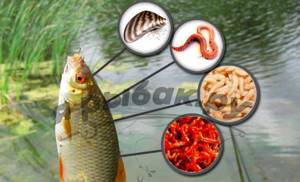
Dung worms are also of particular interest to roaches, especially if selected in small and thin form . Large specimens are advised to be torn into pieces 1–2 cm long. For inert baits, the meat of any shell that lives in the fished body of water is used for fishing. Especially attractive for ramming is the meat of the zebra mussel mollusk, which is a favorite natural delicacy in almost any body of water. It is worth focusing on combinations of animal attachments, so-called sandwiches.
Important! The use of sandwiches is actively used when the number of bites is low. The most popular combination is maggot and bloodworm.
The white larva is clamped with bloodworms in the center of the hook, making the bait both mobile and at the same time attractive in appearance.
We make bait for spring with our own hands
Spring is the most catchy time of year for many fish species, and roach is no exception.
It is in the spring, when the ice melts from reservoirs and the flow of oxygen increases, that the fish become more active. Roach during the spawning period , which runs from April to mid-May, is very inactive and its bite is practically absent, but after spawning, in order to regain strength, the roach begins to actively feed. It is during this period that many anglers can enjoy catching this wonderful fish. In spring, roaches bite on any bait, such as bread, bloodworms, maggots, dough, worms and others. But at this time, when the roach is actively looking for food, it moves around the reservoir and so that the angler does not have to follow the school of roach, you can use bait, which will keep the school in the place desired by the angler.
Spring bait should differ from bait of other seasons in that this bait contains a large number of plant ingredients, since the roach restores strength and energy after a long winter. But you need to know that high-calorie ingredients can quickly saturate the roach, so it is better to exclude bloodworms and maggots from the bait.
An important task of feeding roach in the spring is to lure and keep fish at the fishing point. And when making it, you need to adhere to three factors, namely: the visual factor, in which a cloudy trail of bait remains in the water, which will lure the roach. The aroma factor, which will make the roach stay in the fishing spot, and the taste factor, which will also contribute to the success of keeping the school in the right place.
The first method of preparing spring bait
After preparing the bait, store it in a tightly closed, airtight container.
Aromas and smells tend to evaporate. Bait in spring should consist of the following ingredients:
- Rolled oats or pearl barley – 200-300 grams .
- Breadcrumbs – 100 gr .
- Powdered milk – 2 teaspoons .
- Cake – 150 g .
- Anise or hemp oil flavoring
- Corn or wheat flour – 100 g .
Rolled and pearl barley, which is the main ingredient in the bait mixture for roaches, must be boiled and allowed to brew. After this, add breadcrumbs and corn flour and mix thoroughly. Next, cake and flavoring are added to the bait and all this is infused for about two hours. After this, the bait acquires a smell that will lure the roach and keep it at the fishing site.
Second method (for the lazy)
There is a more modern way of feeding roach in the spring. This bait contains all ready-made components and is sold in specialized stores. These baits most often use ground rolled oats , barley , millet and breadcrumbs, which are quite suitable for spring roach fishing. The bait also contains sunflower or flax grains. But when purchasing such bait, it is necessary to fill it with warm water (or from a reservoir, on the spot) and add various types of flavorings so that the luring effect is most successful.
Ingredients and Flavors
There can be many ingredients, depending on the season, the reservoir itself, the preferences of the roach and other things.
However, the following components are considered standard:
- breadcrumbs (necessarily steamed), preferably from black bread;
- cereals or beans, such as boiled rye, peas or wheat;
- cocoa;
- powdered milk;
- cake, ideally sunflower;
- dung worms, bloodworms, maggots;
- rye;
- wheat;
- algae (only if it’s a warm season);
- bran;
- clay;
- river sand;
- flavorings;
Advice: any bait for roach should not sink in the water, but gradually dissolve in it.
The best flavoring agents that can attract the attention of large roaches are:
- honey, always natural;
- caraway;
- flax seeds;
- mint;
- vanilla;
- caramel, preferably fruity;
- hemp;
- cinnamon;
- thyme;
- coriander and so on;
It is worth remembering that on some bodies of water it works well to use one type of flavoring agent, while on others it is completely different.
Advice: the main thing is not to overdo it with its addition, otherwise the effect may be the opposite.
Flavoring and additives for attraction
An important role in feeding roach is a kind of additives that give color and aroma to mixtures that are so necessary during fishing.
The simplest and most effective additive to bait is soil . Anglers who have been using bait for fishing for a long time add soil to the bait mixture while being directly at the fishing site, since the color of the coastal zone can tell about the color of the bottom of the reservoir. If fishing takes place on a sandy shore, then the bottom of the reservoir most often has a sandy surface and, accordingly, it is necessary to prepare light-colored bait. If the bottom is muddy, then the bait should be dark in color.
In modern times, with the development of technology, fishermen also use additives that contain chemical dyes , which have proven themselves quite well when catching roach at any time of the year. As a rule, such dyes contain enzymes that give the bait bright colors, thereby showing interest in the roach to the new color.
As additives to the smell of bait, a range of aromatic substances , which lure fish with their specific smell. For roaches, the most effective flavoring additives are vanilla , hemp oil and anise . But do not forget that too much flavoring can frighten the fish and it will move some distance away from this place.
In fishing, you should never be afraid to experiment, because every year the lifestyle of not only humans, but all living things, changes. Previously, roach was found exclusively in clean water bodies, but nowadays these water bodies are changing and the roach adapts to a new habitat and to new food sources, which the angler must study and apply for successful fishing.
Tackle for Catching Taran on the Sea of Azov • ARTAFISH.RU
Tackle for catching rams - feeder and float
Taran is one of the varieties of roach, and the largest. Its habitats are the basins of the Dark and Azov Seas.
Due to its prevalence and abundance, this fish, several 10 years ago, was a valuable commercial species that fed the southern regions of Russia and Ukraine.
Unfortunately, due to the sharp decline in its population, ram is now caught only by amateur fishermen and exclusively during the permitted period.
She spends most of her time at sea, but prefers to stay in coastal areas and river confluences. Taking into account that this type of roach is not a sea fish, the ram does not tolerate very salty water, therefore it should not be found in areas with a salt content of more than 7 ppm. The favorite places of this small fish are the mouths of rivers flowing into the seas, canals, bays and estuaries.
Features of catching rams at different times of the year
In the spring, the ram begins to spawn very early, when the water warms up to a temperature of 710 degrees C. It does not spawn in sea waters, but goes into rivers, canals and bays. Here the water warms up better, and there is not just vegetation, which will both protect and feed the offspring.
During the spawning period, in pursuit of the goal of preserving the population, ram fishing, even amateur fishing, is prohibited by law, therefore there is no need to talk about spring hunting for this fish yet.
Conscious fishermen begin to catch ram only in the beginning of summer, when, hungry, it returns to the sea.
The best places for hunting this fish in early summer are coastal thickets of reeds and water lilies, island channels, overgrown canals and estuaries.
In summer, the fish is very active and undemanding in terms of feeding. It is caught with virtually any kind of bait, from various grains to the common earthworm. However, it is still preferable to use maggots, bloodworms, or their compositions.
Fishermen use an ordinary float rod and various bottom devices to catch rams. But the most preferred tackle, of course, is the feeder.
During the summer, the main part of the fish goes into sea waters, alas, the other part remains in fresh water. It is often called river ram. It does not rise very far upstream, but prefers to stay in the mouths.
There is an option to catch rams in the sea from mid-summer to mid-summer. They catch it both from the shore and from a boat using various float and bottom gear.
But sea ram hunting is not very popular among fishermen, because in salt water it occurs quite rarely. In the summer, she not only prefers plant food; alas, she will never disdain a good “bouquet” of maggots.
The only thing is that during this period the ram becomes more cautious and treats suspicious profit with caution.
In late autumn, sea rams again gather in huge swarms and rise into rivers and bays. Here she migrates intensively in search of food, gaining fat before winter.
And when there is first ice, the period of winter hunting for ram begins. She bites intensively throughout the winter. For ice fishing, anglers use a winter fishing rod, both with a jig and with float tackle.
Feeder equipment for catching rams
Taran, just like any other fish, is of course successfully caught with feeder tackle. The main thing is to choose the right equipment that suits the fishing conditions and bait. The feeder for catching this type of roach consists of a standard set that includes the following elements:
When choosing a feeder rod , preference should be given to blanks with a fast or, in the latter case, a medium action, providing for a twist only in the upper part. There is no need for a parabolic fishing rod here, because roach is a small fish, and specimens larger than 500 g are rare.
When fishing on a small river along another canal, the most comfortable rod will be about 3.9 m long. When fishing at sea from the shore, you will prefer a fishing rod that is several meters longer.
The rod test should be selected based on the gear, and include the weight of the feeder, bait and weights. Usually, for catching rams, especially at sea, they do not use forms with a test value of more than 50 g.
You need to choose a suitable spinning reel . There is no need for expensive models if you plan to fish in salt water, its design should anticipate this. The coil size must be within 2000-3000. Taking into account that the tackle for ramming must be light, fast match reels are also used.
The thickness of the fishing line should correspond to the characteristics of the fishing spot and the size of the fish itself.
For catching rams at a long distance in conditions of a clear bottom, a good option would be a line with a width of 0.1-0.12 mm, with a leash of 0.08 mm; for close casting in overgrown places, the best option would be to choose a thicker line - 0.17-0, 3.5 mm with a 0.15 mm leader. The length of the feeder tackle for catching rams is usually 50-80 cm.
Ramming tackle
After the last video, my subscriber suddenly had a question about what gear to use
I caught it. So I decided to share it.
I'm going to ram! Fishing with a float. Fishing in the sea
catching rams in the sea
#on_float_rod. An interesting and rewarding type of fishing. Joyful bites from the striker.
When choosing a hook, it is not the size of the fish that is taken into account, but the size of the bait. Usually small hooks No. 12-No. 18 are used according to international numbering.
As for feeder equipment, as a rule, only sensitive types are applicable. In most cases, anglers use a paternoster or an asymmetrical loop. The 1st option wins due to ease of installation, and the 2nd – due to the highest sensitivity.
To mount the paternoster, take the end of the main fishing line and use it to knit a loop with 2-3 knots for tying the leash. When tightening, any knot must be moistened with water so that it tightens better.
Stepping back from the edge 15-20 cm, an additional loop with a diameter of 8-15 cm is knitted. The feeder will be attached to this loop. There is an option to attach it to the tackle using either the conventional tying method or through a swivel.
This will allow you to remove the feeder when transporting the gear.
Feeder equipment Paternoster
In order to make an asymmetrical loop from the end of the main fishing line, measure 2 m and then fold it in half. Next, over 40-50 cm from the end of the fishing line, we knit a “twist” with a loop for attaching the leash.
For this purpose, we bend a piece of folded fishing line 10-15 cm in half, place an object in the loop and twist it until the loop is 1.5-2 cm in size. After which the loop is tied with a double knot. The free end of a fishing line 60-70 cm long is tied 40-50 cm higher from the “twist” to the main tackle.
Thus, you should get a loop with a diameter of about 60 cm, which has a twisted loop for a leash on one side on the side. The feeder is attached using a swivel using a sliding method to a huge loop.
Feeder equipment “Asymmetric loop”
The feeder for the ram feeder must be small, weighing less than 15-20 g when fishing in still water and 80-120 g when fishing in the current. When fishing on muddy or overgrown bottoms, it is better to use plastic models. For a flat and hard bottom, iron options are also suitable.
Float tackle for ram
You can catch rams with any kind of float tackle, from a beech fly rod to a plug rod. To fish with this trick you will need an ordinary set consisting of:
There are no special requirements for the rod . It will be light, have a length of less than 4 m (based on the fishing method) and have a structure close to frisky.
You will also like any reel The main requirements for it are endurance during frequent casting and resistance to corrosion when fishing at sea.
There is no need to use power models with gear ratios less than 5:1, designed for hunting big fish. It is better to trust high-speed match reels.
It is also not advisable to use coils larger than 2500.
The thickness of the main line , as well as that of the feeder, is 0.1-0.12 mm for fishing in “clean” places and 0.17-0.2.7 mm in the presence of vegetation and bottom irregularities. For the leash, a fishing line of 0.8-0.1 mm is useful.
float , especially when fishing at sea or in bad weather. It must be small, light, but despite this, stable and clearly visible.
If you have to fish in a strong current, the best option would be a float with a spherical or teardrop-shaped body. In still water and with a careful bite, a long, elongated bite indicator is suitable.
Wagler-type floats with a single-point bottom fastening have proven themselves to be good when catching small fish in currents.
The load of the float should correspond to its carrying capacity, immersing it in such a way that only its antenna remains in the field of view.
The hook is selected based on the size of the bait, alas, not more than No. 10. For sea fishing, it also comes with an anti-corrosion coating.
Bait for catching rams
The ram, just like its relative the roach, goes well with “dusty” bait. A feeder feeder filled with a dense and non-crumbling consistency is unlikely to attract this wary fish.
The base of bait for ramming should be breadcrumbs or cereal bran. The second main component of consistency is flavoring.
This fish is very fond of olive, sunflower and hemp oil. It’s good if you have a few grams of cocoa powder. This rumored component, in addition to the smell, will give the bait a dusty effect.
If you overdo it with flavoring, it will definitely scare away the fish.
If you have no experience in making bait mixtures, buy ready-made ones, and you can try it for the first time. Moreover, there are no difficulties here.
To make the most common and inexpensive bait for catching rams, you will need:
- breadcrumbs – 1 kg;
- corn flour – 200 g;
- oat flour – 200 g;
- hemp oil – 15 ml;
More “advanced” home-made consistencies, of course, include powdered milk or oatmeal, various baked goods, small maggots, or bloodworms. Here is the following set for baiting rams:
- biscuit, ground in a meat grinder - 3 parts;
- breadcrumbs - 1 part;
- dry clay – 1 part;
- rye bran – 1 part;
- maggot – 0.5 parts;
- bloodworm - 0.5 parts;
- a pinch of cumin;
Clay is used to be able to glue what remains for our client to do is the components. If fishing is carried out using animal bait, maggots, bloodworms or other insect larvae in the feeder are smaller than the bait on the hook, otherwise the fish simply will not see it.
It is better to soak the ingredients of homemade bait with water from the reservoir where you intend to fish. This will free the mixture from third-party odors. The consistency of the mixture should be such that it does not disintegrate upon contact with water, but crumbles already in the afternoon. Having mixed bait on the shore, it is better to test it in advance. It is better to do this not in the place of fishing, but at a certain distance from it.
Going fishing with the intention of catching a good catch of ram, and that:
- fishing for rams during the period from February 1 to May 31 (spawning period) is prohibited by current legislation;
- The ram, like the roach, is a very cautious and cowardly fish. Vivid colors of tackle, in addition to clothes and other accessories of the fisherman are unacceptable;
- the color of the bait should not differ significantly from the main color of the bottom - this will make the ram think;
- when placing bait on the hook, do not leave it pressed bare - the ram will not bite on such bait;
- There are very few rams left in our reservoirs, so if you catch a specimen smaller than 15 cm, release it, thereby giving it the opportunity to prolong its own fish family.
Source
Source: https://artafish.ru/snasti-dlja-lovli-tarani-na-azovskom-more/

